How Long Can You Drive With A Spare Tire and How to Fix It
A spare tire, also generally referred to as the reserved tire, is a tire that is carried in motor vehicles in case one of the original tires gets flat or busted or has any other sort of emergency.
Most of the time, instead of just carrying a tire, vehicles carry around a whole wheel because fixing a wheel on the car is generally easier than fixing the tire onto the wheel, which also requires additional equipment and can get messy.
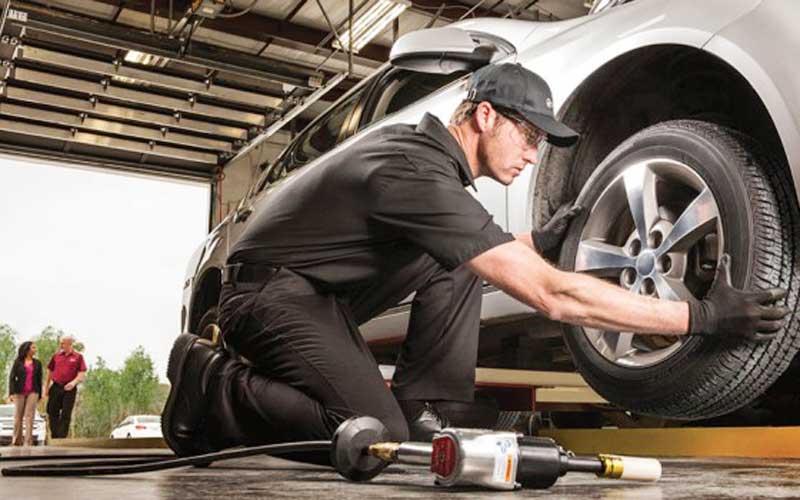
How long can you drive on the spare tire?
This greatly depends on the type of spare tire you are carrying around. There are three types of spare tires, each of which gives a different mileage. We will discuss each of these in detail;
Full-size Spare Tire
Back in the old days, cars were built with enough capacity that carried around full-sized spare tires. These tires are heavier and require more space to be stored, but they are durable.
If you got one of those cars installed with a full-sized spare tire, then you need not worry, as you can drive your car on this tire like a normal one and change it only in case it goes flat or gets busted, etc.
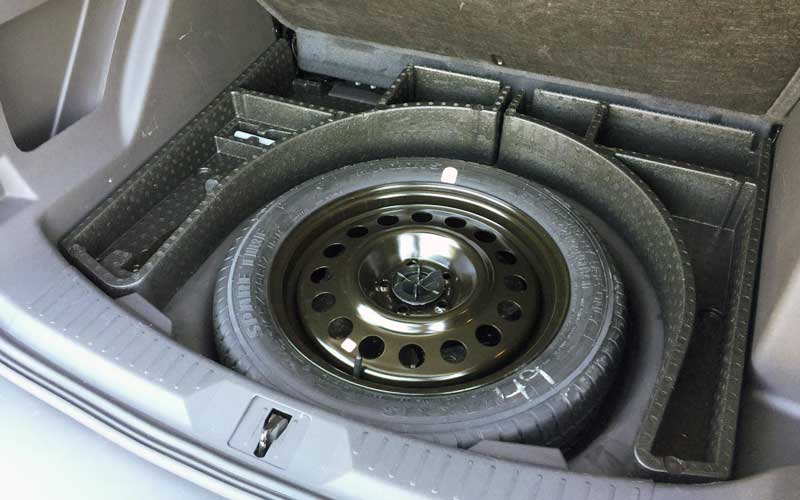
You can take your car to any auto repair shop and get your original tire if it can’t be repaired, replaced by the spare tire. Changing the tire is a very cheap process, and it doesn’t require much time to be done either.
However, there is a problem you might have to face. As you very well know that the spare tire hasn’t been used to the same extent the rest of the tires have, it can cause problems due to unbalanced tires. To deal with this one, we suggest you get a new tire fixed from an automobile shop.
Donut spare tire/space-saver
The second type of spare tires is a space saver, also known as the donut types. These tires, as the name itself suggest, were particularly designed to save space, and hence, they come in compact sizes.
This way, manufacturers were able to reduce the size of the car, but it comes with a price. These tires are not very durable and cannot be used for long drives and not for high speeds, either.
The manual given with the tire will give you a better idea. But in most cases, they cannot be driven at a speed higher than 50 miles an hour and for no more than 70 miles.
They have little to almost no tread, which makes it vulnerable to road hazards etc. Also, as it’s smaller in size than the rest of the three tires, it’s hard for it to keep up with their pace and has to spin faster.
At high speeds, the lubricating grease wears off and can cause unnecessary wear on the clutch plates and gears.
Run-flat tire
These are the latest designed spare tires. They cost less and are more durable than the other spare tires. However, these, too, are not meant to last forever.
They are specially designed to handle road hazards and even for punctures. Unlike the traditional tires, if punctured, they can still drive up to 50 miles so you can take your car to an auto repair shop.
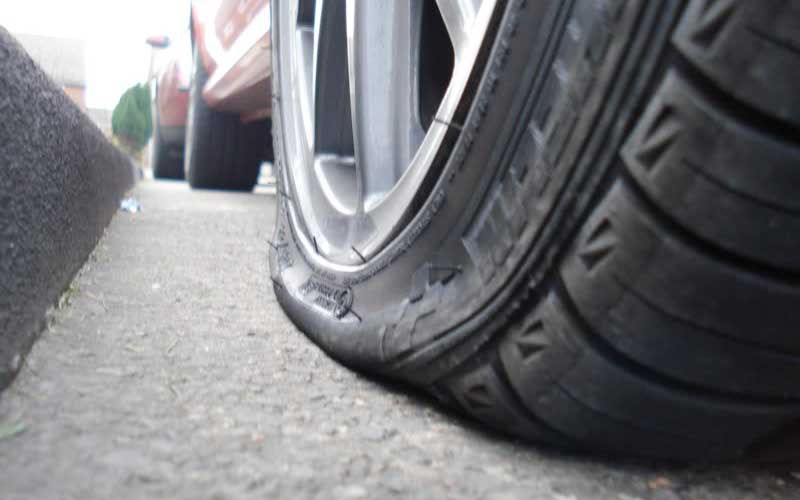
However, replacing these tires will cost you more than replacing the traditional tires.
You must understand that whatever spare tire you use, it eventually needs to be changed, and it’s better not to drive them for more than 70 miles.
What happens if you drive with a spare tire for too long?
Driving around with spare tires isn’t safe in most cases, as we have already discussed unless you have a full-size spare tire, which too eventually needs to be replaced.
The problem with spare tires is that they come in compact sizes as compared to the original tires.
This can cause a huge problem as a tire with a diameter smaller than that of the other tires can cause the vehicle to pull to one side if it is used for the front tires. This results in a loss of control of the vehicle and can result in accidents.
Similarly, having a spare tire in one of the rear tires, although it won’t result in the loss of control of the vehicle, however, will add extra wear, causing the differential to heat up.
Driving at a slower speed and for a limited time shouldn’t cause too many problems. Therefore, it’s important to get the spare tires replaced as soon as possible.
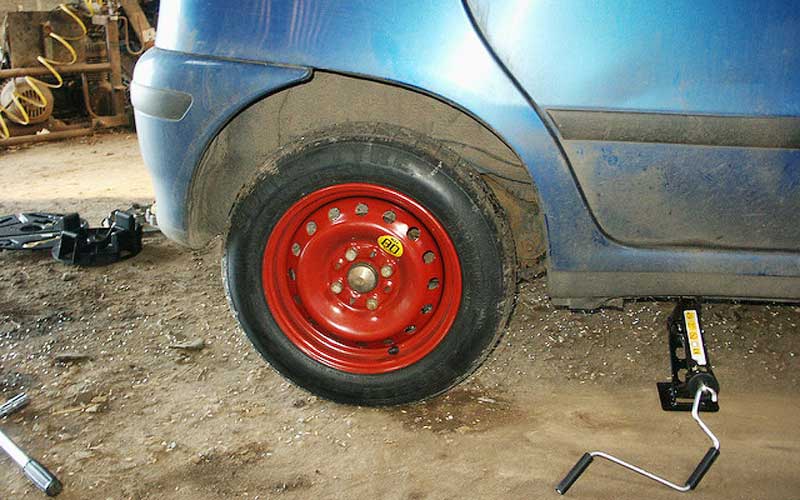
As for where to use the spare tire, the front wheels, or the rear ones, you must understand that your safety is more important than your vehicle’s safety.
So it’s better to install the spare tire in one of the rear wheels and use the rear wheel as the replacement of the front wheel in case the front wheel was busted. Most of the cars are front-wheel drives, so this shouldn’t cause too much damage, especially if you drive at a low pace for a limited time.
These tires are only for rescue purposes, not to be used on a regular basis. So use them, not more than necessary, only to get to the automobile shop and replace the spare tire as well the original tire that got damaged.
How to fix a spare tire in place of an original tire in case it gets busted or flat?
Now, if you one of your car’s tire gave up on you and you got a spare in the trunk, then it’s important that you know how to fix that spare tire or any tire for that matter to your car. Don’t worry; it’s a simple process that doesn’t require much time or effort and can be easily done all by yourself.
Read Also: How to Plug a car tire
So here’s what you have to do
- Initially, you need to park the car in a safe place so you will have your own personal space to change the tire.
- Turn off the car and put the transmission in parking mode and set the brakes as well.
- If you are on a highway, then it’s highly important to put out warning triangles or double indicators to let the other drivers know.
- Take out the spare tire and all the tools you are going to need, including the jack and the wrench.
- Now by using the wrench, make the lug nuts lose but don’t take them out yet.
- Now by using the jack, lift the car slightly up the ground and now remove the lug nuts.
- After the nuts have been removed, carefully remove the flat or the busted tire.
- You can put the tire next to the jack. In case if the jack fails, the tire will act as a support and prevent damage.
- Be careful! Don’t ever get under the car while it’s supported by the jack, as the jacks are not considered very reliable, and things can get messy.
- Now mount the spare tire. Lift the vehicle slightly higher if you need to.
- Attach the lug nuts and keep on spinning them using the wrench until the tire stops wiggling in its place.
- The tire has been replaced. You can now take out the flat tire from under the car and carefully lower the car.
Safety tips
Check the pressure in the spare tire before you replace the original one with it. If it’s not sufficient, it’s advisable to just call for help.
While changing the tire, at no point put any of your body parts under the car.
While you are tightening the nuts, make sure that they are properly tightened. Otherwise, it can be really dangerous.
Read Also: How to Read Tire Size
Final Thoughts
Even though the tire has now been replaced with a spare one, as we discussed earlier, it’s still not safe to drive it at long distances at high speeds. Therefore, for your own safety, we advise you to get your tire replaced with a new one.
The maximum distance that a car can cover with a spare tire is 70 miles, and this distance is enough to get you to the nearest mechanic. So as soon as you have changed your tire, get it replaced with a one that is the same in size as compared to the other tires.
Smaller tires that are less in diameter and weigh less can cause the car to be strongly pulled to one end if used for front wheels. As for the rear positions, they can cause the differential to get heated up by adding extra gear.
You can avoid these two situations by driving at low speed, not nay higher than 50 miles an hour, which is approximately 80 kilometres an hour.
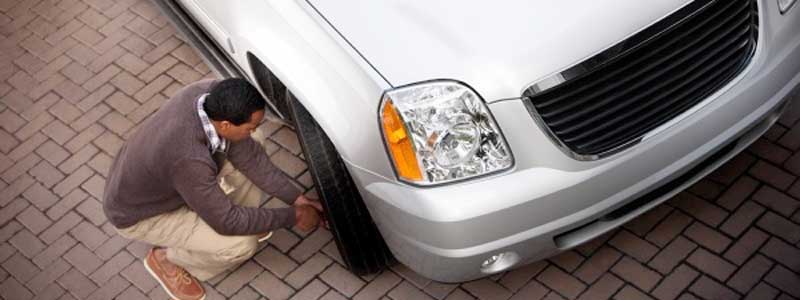





Post Comment